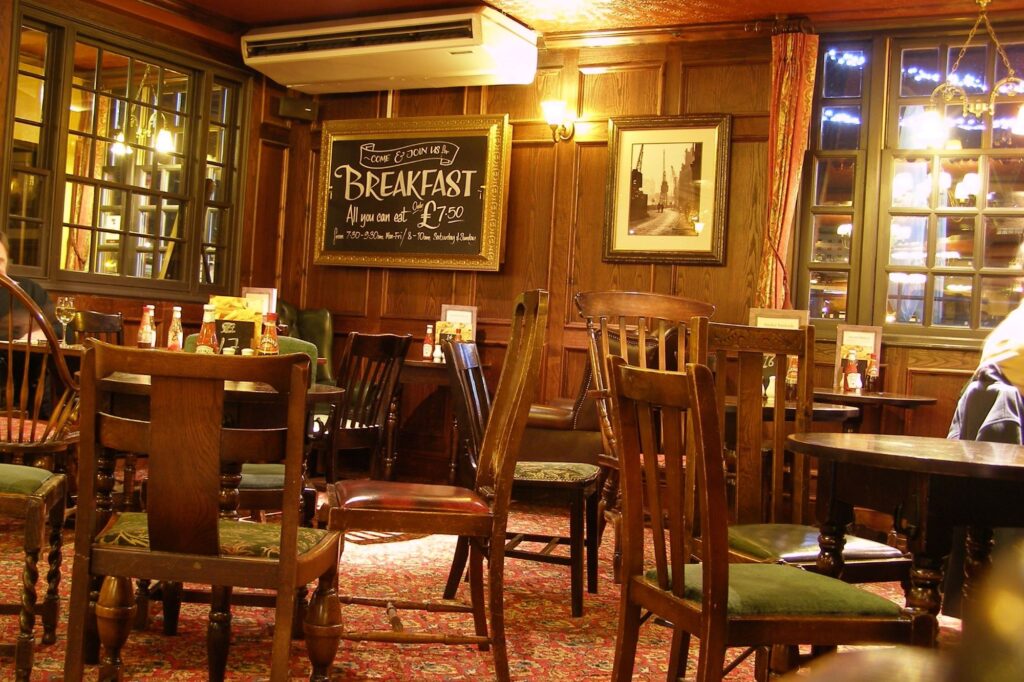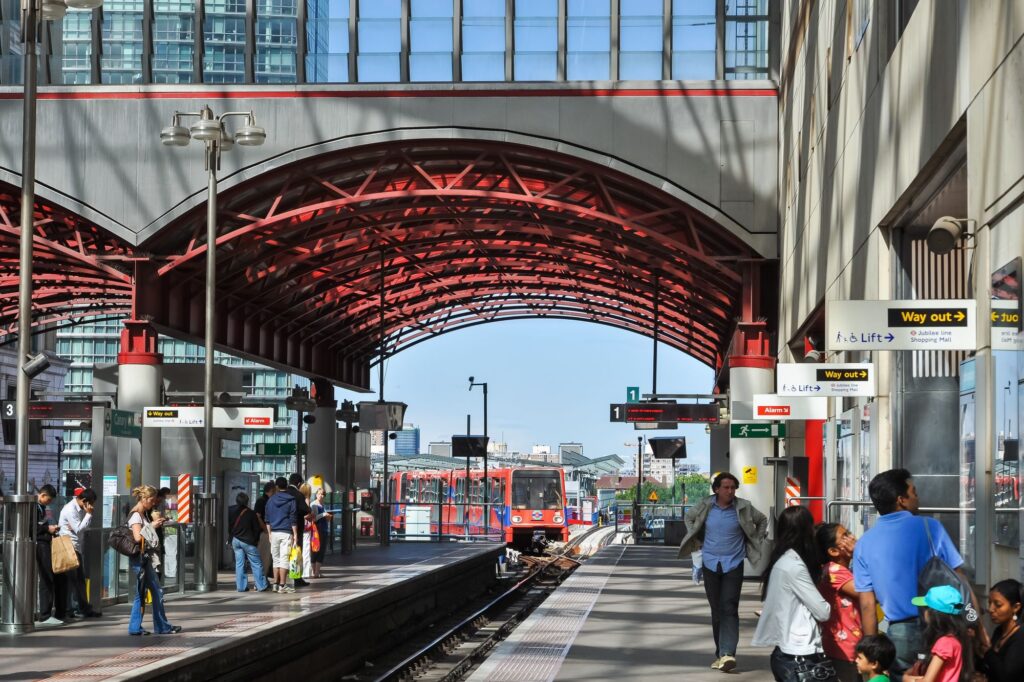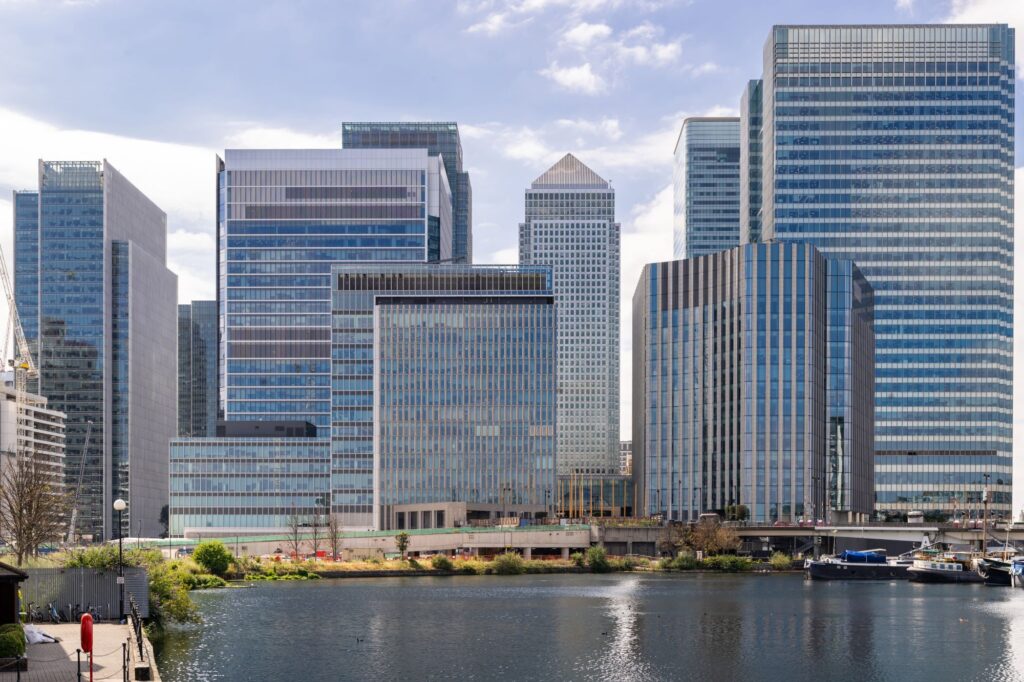Thinking about moving to Canary Wharf? It’s a vibrant hub with top-notch transport links, diverse housing options, and ample amenities. Before making the move, consider the lifestyle, cost of living, and work-life balance the area offers. This guide will walk you through the essential things to consider when relocating to Canary Wharf.
Key Takeaways
- Canary Wharf boasts exceptional transport links, including the Jubilee Line, DLR, and Elizabeth Line, making it highly accessible for commuting and travel.
- A variety of housing options in Canary Wharf cater to diverse preferences and budgets, with property prices averaging around £720,000 and rental costs averaging £655 per week.
- Canary Wharf provides abundant amenities and facilities, including a large shopping centre, fitness and wellness facilities, green spaces, and numerous dining and entertainment options, enhancing lifestyle quality for residents.
Location and Accessibility
Nestled in the Borough of Tower Hamlets in East London, Canary Wharf holds a strategic position in Zone 2. The area is renowned for its excellent transport links, making it incredibly convenient for residents and professionals alike. With the following transport options running through Canary Wharf, getting to Central London and beyond is a breeze:
- Jubilee line: offers quick connections to major areas like London Bridge and Waterloo
- Docklands Light Railway (DLR): provides easy access to various parts of East London
- Elizabeth Line: ensures swift access to Liverpool Street and even Heathrow Airport
Canary Wharf is easily accessible via:
- Public transport, including the Canary Wharf Tube Station on the Jubilee Line, DLR, and Thames Clippers
- Major road links such as the A12, A13, and A102
- London City Airport, which is just a short distance away
Whether you’re commuting for work or planning a weekend getaway, the transport options here are designed to cater to a wide range of needs.
The future looks even brighter for Canary Wharf, located in the heart of London Docklands, with ongoing transport improvements promising even quicker services to major hubs like Liverpool Street and seamless access to Heathrow Airport. Continuous improvements in the transport infrastructure keep Canary Wharf among the most accessible and well-connected areas in London.
Housing Options
A variety of housing options catering to different preferences and budgets are available for those considering Canary Wharf as their home. From sleek modern skyscrapers to charming period homes, the residential area caters to a broad spectrum of tastes. Some notable housing options include:
- Wood Wharf: Includes over 3,600 homes, some of which are classified as affordable.
- One Park Drive
- Spire London
- Landmark Pinnacle
- South Quay Plaza
Each of these developments offers luxurious living spaces with stunning views.
For those who appreciate a blend of history and modernity, the converted warehouses in West India Quay provide spacious living with unique period features …
For those who appreciate a blend of history and modernity, the converted warehouses in West India Quay provide spacious living with unique period features like original ceiling beams and exposed brick walls. These properties stand out from the typical high-rise apartments with their distinctive charm.
Canary Wharf has an average property price of around £720,000, with prices ranging from £235,000 to over £1.9 million. When considering costs, it’s important to be aware of this broad price range. Rental prices are also diverse, with the average rental price hovering around £655 per week, though it can go over £2,000 a week for premium properties. Despite these figures, living in Canary Wharf can be more affordable compared to other central London areas, making it an attractive option for many residents.
Amenities and Facilities
More than just a residential area, Canary Wharf is a lifestyle destination teeming with amenities and facilities to fulfil every resident’s needs. The Canary Wharf Shopping Centre, the third-largest shopping mall in London, is a major highlight. It encompasses distinct areas like Cabot Place, Canada Place, and Jubilee Place, each housing a variety of shops, cafes, bars, and restaurants. Whether you’re in the mood for some retail therapy or a casual coffee, the shopping centre has it all.
Beyond shopping, Canary Wharf offers a range of fitness and wellness facilities designed to promote a healthy and active lifestyle. Residents have access to:
- Swimming and hydro pools
- Gyms
- Saunas
- Steam rooms
These amenities create a community-oriented environment that integrates work and leisure seamlessly. They not only enhance the quality of life but also foster a sense of community among residents.
Another highlight of Canary Wharf is its green spaces, providing a refreshing outdoor environment for relaxation and recreation. These areas are perfect for unwinding after a busy day or enjoying a weekend picnic with family and friends. The combination of modern amenities and natural spaces makes Canary Wharf a well-rounded and desirable place to call home.

Dining and Entertainment
Canary Wharf delivers an impressive array of dining and entertainment options. The area boasts a wide array of restaurants, ranging from casual eateries to upscale dining establishments. Some popular options include:
- The Pearson Room: offers a casual yet sophisticated dining experience right in the heart of Canary Wharf
- Wahaca
- Gaucho Canary
- Wagamama
- Bokan
- Chai Ki
- The Narrow in nearby Limehouse
For lovers of Japanese cuisine, ROKA is a must-visit restaurant known for its exquisite dishes and vibrant atmosphere. Additionally, Giant Robot in Crossrail Place is a fantastic venue for street food enthusiasts, offering a variety of food stalls and panoramic views of the London skyline. The dining scene in Canary Wharf is diverse and dynamic, catering to all tastes and preferences.
Entertainment options are equally abundant, with numerous bars, live music venues, and an award-winning free public art collection. Whether you’re looking to enjoy a night out with friends or explore cultural attractions, Canary Wharf has something to offer. The vibrant nightlife and cultural offerings make it a lively and engaging place to live.
Green Spaces and Outdoor Activities
Although Canary Wharf is famous for its skyscrapers and urban setup, it also houses several green spaces offering a refreshing retreat from the urban hustle. Jubilee Park, located atop a car park, is one such oasis with its lush gardens and tranquil atmosphere. Another gem is the Crossrail Place Roof Garden, one of London’s largest roof gardens, offering a unique blend of exotic plants and stunning views.
Westferry Circus Gardens, Bank Street Park, and Bond Street are additional green spots that residents can enjoy. These areas host pop-up events and outdoor activities, adding a vibrant touch to the community. Cabot Square, with its central fountain and artworks, and Columbus Courtyard, known for public art displays, further enhance the aesthetic appeal of the area.
Harbour Quay, with its coastal boardwalk, picnic spots, and outdoor fitness equipment, adds a unique element to the outdoor offerings of Canary Wharf, including the nearby Canada Square Park. These green spaces not only provide a serene escape from urban life but also promote community engagement and outdoor activities, ensuring residents have ample opportunities to relax and unwind.
Education and Schools
For families contemplating a move to Canary Wharf, numerous ‘Outstanding’ rated primary and secondary schools guarantee exceptional educational opportunities. Bygrove Primary School and Culloden Primary – A Paradigm Academy are two notable primary institutions near Canary Wharf, both rated ‘Outstanding’ by Ofsted. These schools offer a strong educational foundation for young children.
Canary Wharf College Glenworth, located on Saunders Ness Road, Isle of Dogs, is another ‘Outstanding’ primary academy that caters to children aged 4-11. Cyril Jackson Primary School, situated on Limehouse Causeway, also holds an ‘Outstanding’ rating and serves children aged 3-11.
For older students, secondary schools such as Ark Greenwich Free School and Brampton Manor Academy provide ‘Outstanding’ education for students aged 11-18. These schools ensure that children of all ages have access to top-tier education, making Canary Wharf an ideal location for families prioritising academic excellence.
Work-Life Balance
Canary Wharf exemplifies a community that promotes a balanced lifestyle by harmoniously blending work and leisure. As one of London’s primary financial hubs, the area offers a variety of office leasing options that facilitate hybrid working. This flexibility allows employees to reduce commuting time and gain more control over their schedules. Understanding Canary Wharf’s history further highlights the evolution of this dynamic district.
The presence of flexible workspaces means that young professionals can enjoy the benefits of multiple working locations, promoting a healthier work-life balance. Canary Wharf’s design encourages a lifestyle where work and leisure coexist harmoniously, making it an attractive place for those looking to balance their professional and personal lives.
Transport Links

Canary Wharf takes pride in its extensive transport links which simplify commuting and travelling. Some of the key transport options in the area include:
- The Jubilee Line, which offers quick connections to key areas like London Bridge and Waterloo
- The Docklands Light Railway (DLR), which connects Canary Wharf to Bank and Stratford
- The Elizabeth Line, which provides swift access to Liverpool Street and Heathrow Airport
These transport options make it easy to get around and explore the city.
The area is also well-served by bus routes, with six different lines passing through Canary Wharf, including the D3, D7, and D8. For those who prefer a more scenic route, Thames Clippers river bus services offer a unique way to travel between Canary Wharf and central London or Woolwich. These extensive transport options ensure that residents can easily navigate the city and beyond.
Moreover, London City Airport is less than three miles away, making international travel highly convenient. Whether you’re heading to a meeting in the city, catching a flight, or exploring London, Canary Wharf’s transport links provide unparalleled ease of access.
Safety and Security
Canary Wharf prioritises safety and security, implementing a robust system to safeguard residents and visitors. The area boasts a 24/7 security presence, including both uniformed and plain clothes patrols, to ensure comprehensive coverage. Random vehicle searches at entry points further enhance security measures.
The modern Control Room, staffed around the clock, allows for constant monitoring and rapid response to any incidents. Security personnel receive extensive training from internal teams, the Police, and industry experts, equipping them with the skills to recognize unusual or suspicious behaviours and respond effectively. These measures ensure that Canary Wharf remains a safe and secure place to live and visit.
Cost of Living
Reflecting its status as a modern living destination, the cost of living in Canary Wharf can be higher than in other areas of London. The average monthly rent for a one-bedroom apartment is around £2,081, which is higher than in many other parts of the city. Utility bills typically range between £150 and £250 per month, influenced largely by energy consumption.
Although living costs are higher, the benefits of residing in such a well-connected and amenity-rich area often justify the expense. Careful budgeting is essential, especially considering that the average monthly cost of living in London for a single person exceeds £3,200. Despite the costs, many find the lifestyle and convenience offered by Canary Wharf worth the investment.
Social Life and Community
With a vibrant social life and robust community bond, Canary Wharf keeps its residents engaged and entertained through year-round events. Some of the activities and events that residents can enjoy include:
- Open water swimming
- Foodie festivals
- Independent restaurants
- Cafes
- Cocktail bars
These activities and venues provide plenty of opportunities for socialising and making new friends in the area.
Exclusive events and classes, such as yoga and language lessons through the Vertus+ app, further enhance the community spirit. Monthly events like Wine Wednesdays are designed to help residents network and build connections. Shared amenities like lounges, private dining rooms, and screening rooms promote interaction and foster close ties among residents.
NOTE
The combination of a dynamic social scene and a supportive community makes Canary Wharf a unique and appealing place to live. Whether you’re looking to meet new people, engage in cultural activities, or simply enjoy the vibrant atmosphere, Canary Wharf has it all.
Summary
In conclusion, Canary Wharf is a remarkable place to live, offering a blend of modern living, excellent transport links, diverse housing options, and a vibrant community. From its extensive amenities and green spaces to its top-rated schools and robust security measures, Canary Wharf provides a comprehensive living experience that caters to a wide range of needs. If you’re considering a move to this dynamic part of London, rest assured that Canary Wharf has everything you need to live comfortably and thrive.
Frequently Asked Questions
What are the transport options in Canary Wharf?
Canary Wharf offers excellent transport options, including the Jubilee Line, DLR, Elizabeth Line, bus routes, and Thames Clippers River bus services, providing convenient access to various destinations in the area.
What types of housing are available in Canary Wharf?
Canary Wharf offers a variety of housing options, including modern high-rise apartments, period homes, and new developments such as Wood Wharf which provides over 3,600 homes.
Are there good schools in Canary Wharf?
Yes, there are several ‘Outstanding’ rated primary and secondary schools in Canary Wharf, providing excellent educational opportunities for families.
What amenities and facilities are available in Canary Wharf?
Canary Wharf offers a wide range of amenities, such as a large shopping mall, fitness facilities, green spaces, and diverse dining and entertainment choices. These amenities cater to different needs and preferences, making it a well-rounded area for both residents and visitors.
How safe is Canary Wharf?
Canary Wharf is considered safe due to its 24/7 security presence, modern control room monitoring, and trained personnel.







